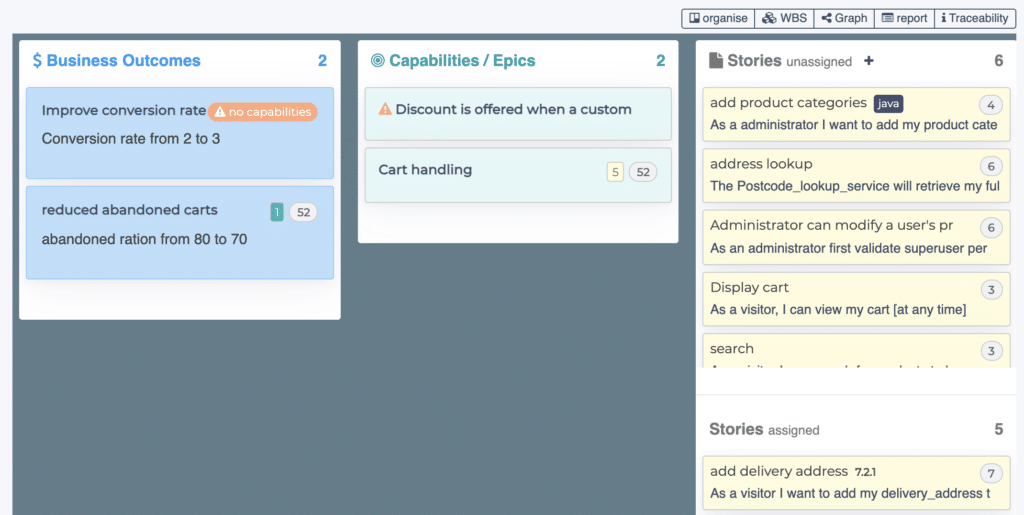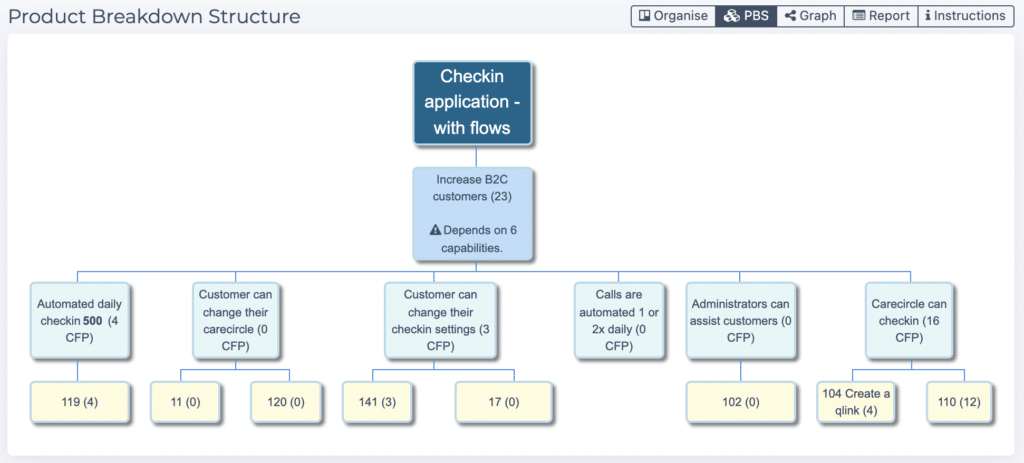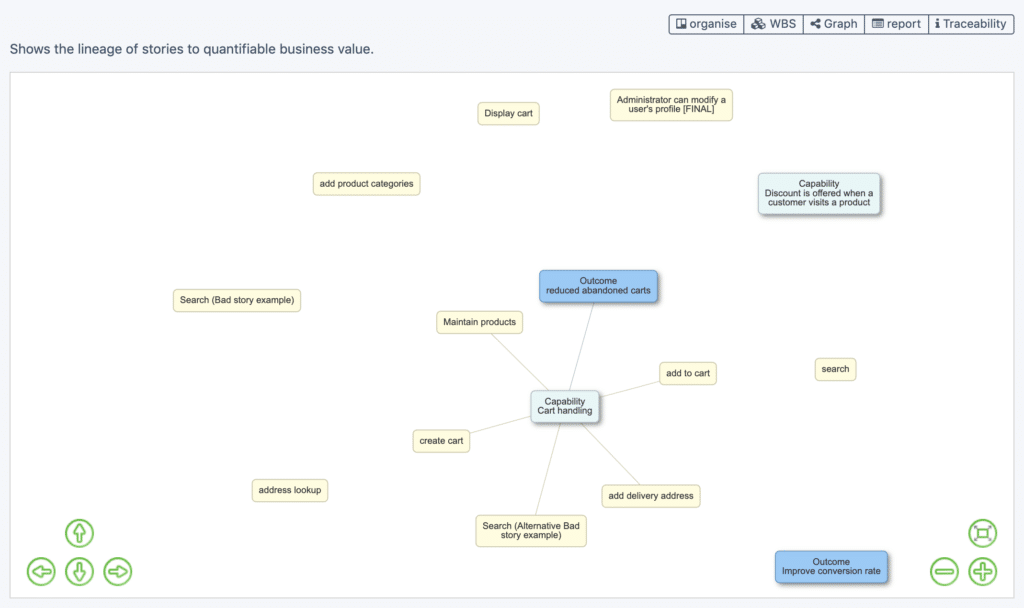Requirements Traceability
Software requirements can be traced to development artefacts for different purposes:
Ensure value. Trace requirements to business value (akin to Value Stream Mapping), to ensure that all requirements are of value. ScopeMaster helps this in two ways, 1) ensure that each requirement has a benefits statement, 2) the value tracer, aligns each requirement to business objectives.
Ensure completeness. Trace requirements to existing and expected functions, to ensure that data is fully maintained within a system. ScopeMaster accelerates this work via automated CRUD analysis and the Use case modelling.
Ensure no duplication. Trace requirements to existing functions, to determine if there is any duplication within a set of requirements or system functions. ScopeMaster helps accelerate this via automated CRUD analysis.
Ensure consistency. Trace requirements object and user naming to ensure that data group types (objects names) and users (persona names) are used consistently.
Change Impact Analysis. With functional traceability, it can be easier to determine the impact of one change on other parts of a system, including what parts of system will need testing. Several of ScopeMaster’s views can help with this, including the “related tab”, CRUD analysis, Use case modelling and Search results.
Test Coverage Traceability. With functional traceability to tests, you can ensure that your test coverage is adequate. Again ScopeMaster helps you to establish baseline test coverage with its automated functional test generation.
ScopeMaster Value Tracer
Requirements Traceability – to business value

ScopeMaster encourages Capability based planning, whilst ensuring Capabilities are aligned to quantifiable business outcomes.
Requirements value traceability is about tracing each functional requirement to a quantified valuable business outcome. (It can sometimes also mean tracing a requirement through to a system design, the former is more common). Tracing every requirement back to business outcome(s) helps to ensure that all the work we do in building some software has merit or real business value. This can be a bit tiresome, but ScopeMaster makes it very easy. Requirements traceability is important to ensure that we check that each requirement is valuable. We occasionaly end up building features that are not absolutely necessary, that are not aligned to what the customer really wants; that is what we are trying to avoid. Having a tool that helps ensure alignment between business outcome is therefore vital to avoid project waste.
ScopeMaster makes this easy in three ways.
- With the Value Tracer, ScopeMaster encourages you to articulate the quantifiable business outcomes
- The Value Tracer makes it easy to map outcomes to capabilities
- Then the Value Tracer makes it easy to map functional requirements to capabilities.
Just Drag and Drop

Using the Kanban-like metaphor, all you have to do is
- drag and drop user stories onto capabilities
- drag and drop capabilities onto outcomes
All the while ScopeMaster tracks the functional size (implied cost) of each capability and hence each outcome.
Requirements Traceability Visualisations

Using ScopeMaster’s Value Tracer helps to identify requirements that are not aligned to business value. It also helps to identify the functional size of Capabilities which meet a business objective.

See these other features of ScopeMaster that help to automate traceability:
Use Case Modelling – automated
User and Objects, Auto-detection
